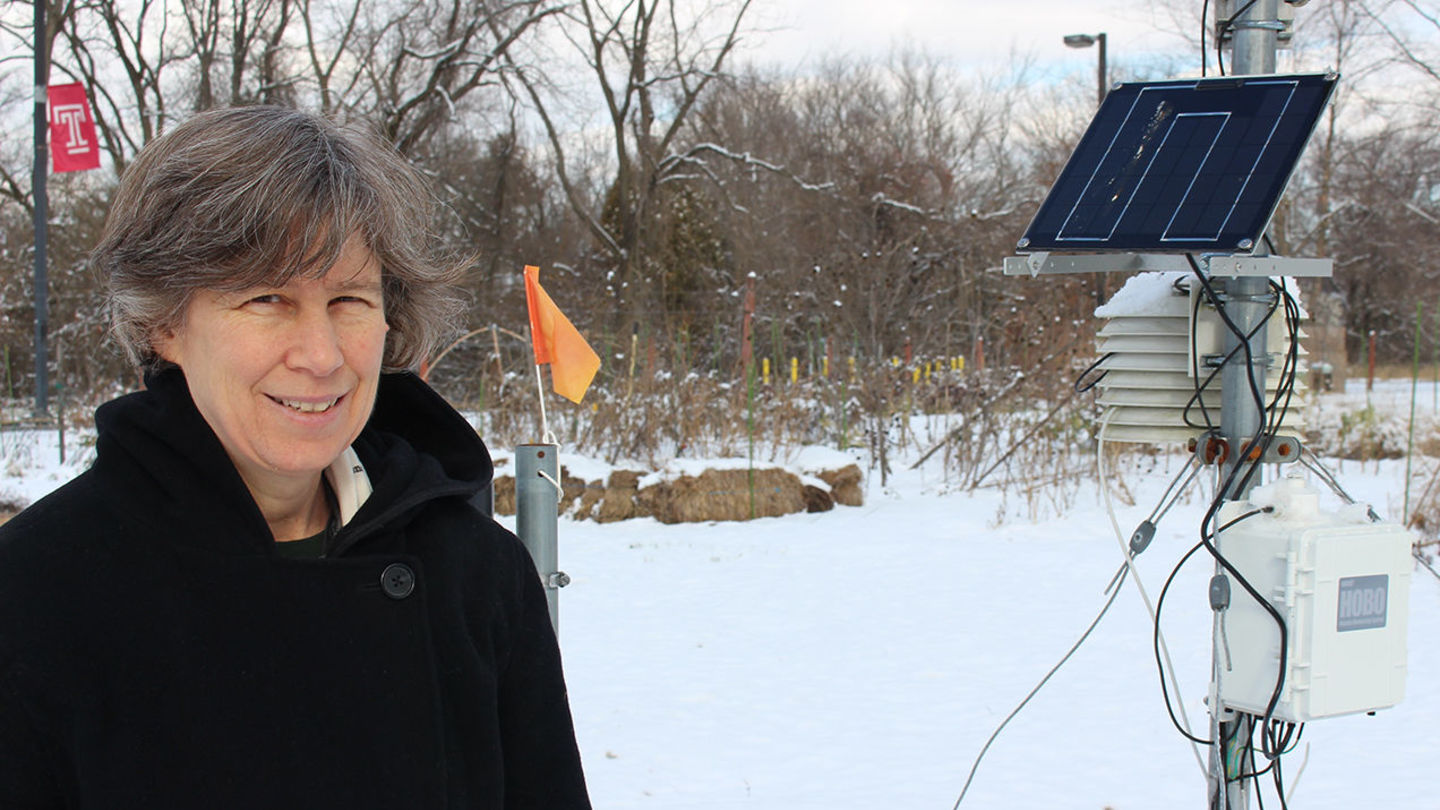
If you happen to ask Dr. Laura Toran "how's the weather" she'll be able to tell you in minute detail.
Her wireless weather station in the Ambler Arboretum of Temple University provides detailed, real-time reports on temperature, humidity, wind, sunlight, dew point and more.
"Temple Ambler is perfectly situated as a central point between several watersheds, making it a great location for the study of urban hydrology," said Toran, Professor of Earth and Environmental Science in Temple's College of Science and Technology. "The weather station on campus serves a number of purposes. I use it for monitoring conditions in the nearby watersheds such as Wissahickon Creek and it's used to analyze precipitation patterns as part of ongoing stormwater management research."
For example, the weather station provides essential data in studying "stream metabolism — how a stream gets its nutrients, which is controlled by sunlight," she said.
Toran monitors water quality at stormwater control structures in the Upper Dublin, Hatboro, Upper Moreland, Abington, and Cheltenham townships for a William Penn Foundation grant to improve water quality in the Delaware River Basin. She also has a National Science Foundation Grant to study urban hydrology, which focuses on Pennypack Creek, along with several other urban watersheds on the east coast.
Toran and colleague Dr. Jonathan Nyquist, a geophysicist in the Earth and Environmental Science department, used a controlled site on campus to emulate the location of former building structures in urban environments to test water infiltration. The project used "time-lapse electrical resistivity tomography" at the former site of the Gilbert House, a location donated to Temple many years ago.
According to Toran, the site was an excellent surrogate for vacant lots in Philadelphia that is "accessible and safe for long term testing and potentially gives us multiple zones of infiltration — grass, driveway and foundation."
Toran also maintains a site on the Ambler Campus where she has drilled wells into fractured bedrock. The site is maintained as a "clean site," which helps teach students sampling techniques they will need when studying contaminated locations such as superfund sites.
Toran continues to work closely with University researchers in Engineering and Landscape Architecture and Horticulture on several large stormwater management projects, including an evaluation of stormwater control structures along the I-95 corridor, which is supported by a grant from the Pennsylvania Department of Transportation.
"Evaluating the stormwater management structures that have been put in place can influence future design. Hopefully, the impact of our research will be improved stormwater controls," she said. "This is a multi-disciplinary, multi-college project that provides a lot of opportunities for long-term study."
Toran earned her bachelor's degree from Macalester College (1980) in St. Paul, Minn., and her doctorate from the University of Wisconsin-Madison (1986), both in geology. Between degrees, she served as a research associate at the U.S. Geological Survey's Water Resources Division for two years.
"My interest in the environmental sciences was public-spirited," she said. "I wanted to do something that would help out — I didn't just want to get a job; I wanted to get a job that would contribute to this being a better place for people to live. I really liked science, so I figured I should do something that would help protect the earth."
